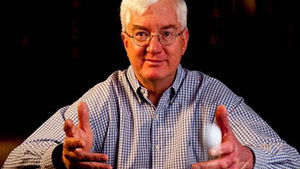Q&A with Titleist
Golfmagic chats to Bill Morgan and Mary Lou Bohn

Having learnt about the new Titleist golf balls at the official launch, Golfmagic spoke to Bill Morgan, Titleist senior vice president of golf ball research and development, and Mary Lou Bohn, Titleist vice president of marketing and communications.
Here’s what they had to say...
To set the scene for our readers, could you explain what goes on at the Titleist R&D lab?
Mary Lou Bohn: Everything we do starts with the golfer. We look from the outside in. Within the R&D team, we’ve got golfers and people who are engineers, chemists and they really want to make the best golf ball possible.
They have a lot of input and are constantly bringing out new types of materials, core construction, different technology, cover layers. They get really excited when they actually see it come into prototype form and see it come into development.
Most of our product management team plays golf and some of them are even astro-physicists. They’re all highly specialised in what they do.
Are the balls tested by computers and figures or by the eye out on the range?
MLB: It’s a combination of the two. We will go through extensive machine testing at our two Titleist Ball Plants in New Bedford, Massachusetts, but at the end of the day we’re not selling golf balls to machines.
Any product has to be tried, tested and observed by golfers, so we are out there with them. Other times, we send samples to golfers for them to try.
We want a full page of the golfers’ experience because that’s the way the game is played.
‘I don't use premium balls because I can’t compress them,’ is something I hear on a regular basis at my club. Do you believe golfers should play a ball with lower compression if they don’t compress the ball like a high swing speed player?
Bill Morgan: There is a common misconception that a player must match the compression of the ball to his or her swing speed in order to properly ‘compress’ the ball. Every golfer compresses the ball on every shot. You might not always feel like it but you do.
Another myth is that lower swing speed players will hit a lower compression golf ball longer. No single element of golf ball design determines the golf ball’s performance or its distance.
Compression is simply a result of this process and is a test of the relative softness of a golf ball, which relates to how firm or soft a ball feels to a golfer.
While there is no peformance benefit to choosing a specific compression, many golfers regardless of swing speed do have feel preferences. Golfers who prefer softer feel may prefer lower compression golf balls.
There is definitely a difference between how a Tour player compresses it and how a low-speed player does, but it’s not that much.
How important is using the same golf ball for more consistent scores?
BM: There’s only one piece of equipment you use on every shot, your golf ball. Every shot counts and so does your ball, yet we often hear golfers say they play with ‘whatever is in the bag’.
Performance differences between golf ball brands and models are game changing, especially on short game scoring shots. Playing with the same golf ball model each round eliminates this performance variation and helps the golfer hit more greens in regulation and get the ball closer to the pin, which in turn leads to more putts holed.
It’s amazing that around 68% of golfers in America have three or more golf ball models in their ball pocket. That’s no good for consistency. At the end of the day, if you play with one golf ball and stick to it, it will help you shoot consistently lower scores.
So if consistency is all part of the improvement process, what have you done to make the NXT Tour and NXT Tour S more consistent than ever?
MLB: For starters, we are always tightening our tolerances within the manufacturing. If we can make a product even tighter and there’s less variation from ball to ball, then that’s even better.
But our new octahedron ball design in the NXT Tour and NXT Tour S creates a very consistent ball flight, so we feel we’ve made some significant improvements from an aerodynamic perspective which is contributing to the longer distances.
Is the different dimple pattern on the DT SoLo all about lowering ball flight?
BM: The DT golfer likes the way his or her golf ball looks and carrying that same dimple pattern forward on DT is continuing to give them a golf ball whose appearance they are familiar with.
Dimple changes don’t really affect too many people. However, more than just the orientation or the layout or pattern, if you will, affects trajectory. Then we go in and modify the depths and diameters of the individual dimples and we can raise or lower trajectory.
So yes, that specific dimple specification regarding edge angles, depths and diameters does keep the flight on the DT down where we want it to be for those golfers to help them get more distance.
Interview continues. Click here to learn more.
��

